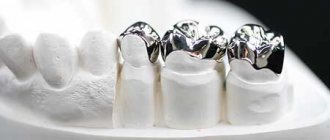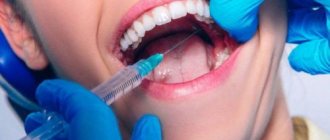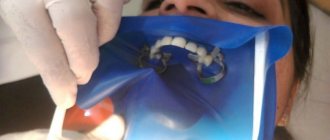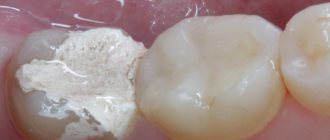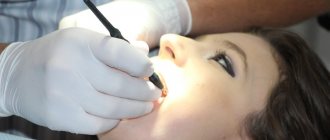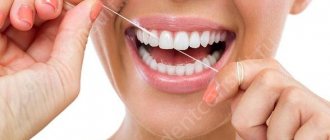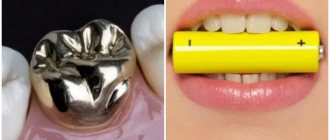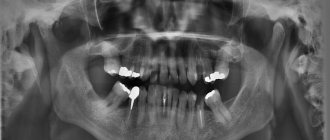Violation of the integrity of the anterior dentition, wide gaps and large fillings cause a cosmetic defect in humans. As a result, he cannot boast of a snow-white smile, and when communicating, he develops an unpleasant habit of covering his mouth with his hand.
Facets are used in dental practice to eliminate cosmetic defects. They allow you to restore lost teeth and give the tooth a natural appearance and original shine.
What is it, purpose
In dentistry, the term facet has a double meaning:
- In the first case, it is defined as an orthopedic structure that imitates a missing tooth by attaching to adjacent crowns. Fastening is carried out using a bridge prosthesis without contact with the gum surface.
- The second meaning of this term is facing material. It is applied to dentures to hide visible defects that arise due to the curvature of the teeth or an increased gap between them. In this case, faceted products act as overlays, which are made of ceramics, porcelain or plastic.
Photos of facets:
applied facets
Unlike plastic, the use of ceramics in the manufacture of onlays allows for better aesthetic results and preservation of the dental unit.
A thin layer of enamel is removed from the tooth surface. In this case, the orthopedic product is installed in one session (without making an impression and wearing temporary prostheses). This is achieved through the use of a special camera, which makes an optical impression of the teeth. After this, a precise design is created in a few minutes on a special milling machine.
The big advantage of this method is the possibility of making a filling or crown. If the patient gives up bad habits, then dental facets placed using this technology can last more than 10 years.
To prevent the crown from standing out from the dentition with its metallic shine, 2 types of veneer are used:
- The facet overlay is applied on the facial side, while the chewing and lingual parts remain uncovered. In this case, the orthopedic product is called straight.
- Reverse facet structures are characterized by covering the entire surface of the artificial tooth unit.
Zirconium dioxide dental bridges –
Zirconium dioxide ceramic bridges are manufactured using CAD/CAM technology, which involves milling bridges from pressed zirconium dioxide blocks on a computer-controlled machine. Sintered zirconium dioxide has a strength comparable to metal (more than 900 MPa). Thanks to this, zirconium dental bridges can be made of any length - even horseshoe-shaped bridges with a length of 12-14 teeth (which cannot be made from any other types of metal-free ceramics).
We have already said above that a zirconium bridge is the gold standard for prosthetics of the chewing group of teeth. But there are questions about the aesthetics of zirconium dioxide bridges, and when prosthetizing the front teeth, you may encounter a big problem (the bridge will stand out against the background of the patient’s own teeth). The fact is that there are 2 types of bridges and crowns made of zirconium dioxide, and they differ from each other not only in aesthetics, but also in the risk of ceramic chips.
1) “Traditional” zirconia bridges –
For such bridges, only the internal frame will be made of zirconium dioxide, which is lined with ceramic mass, or rather porcelain, on the outside (Fig. 14). And this is due to the fact that most dental laboratories use cheap versions of zirconium dioxide blocks. This zirconium dioxide has a bright white color, plus it is completely opaque, and as a result, such a material does not allow achieving a certain degree of translucency, which is characteristic of natural tooth enamel.
Crowns and bridges made from such material will have an unnatural milky white color, plus there will be no translucency characteristic of natural teeth. Therefore, in order to improve aesthetics, only the internal frame is milled from such zirconium dioxide, which gives strength to the structure, and then the dental technician, by applying layers of porcelain, gives the crowns of the bridge the final shape and color. But even despite this, the aesthetics of such crowns and bridges will be far from perfect.
Plus, this manufacturing method has another disadvantage. We have already said above that zirconium dioxide has the strength of a metal (from 900 MPa), however, the layer of porcelain mass on the surface of the zirconium frame has a strength of only 80-120 MPa. This leads to chips of the ceramic mass (according to statistics, within 6 years they occur in approximately 10% of patients). The chips are repairable, but the reliability of such repairs leaves much to be desired.
Conclusions : we do not recommend using zirconium dioxide bridges (made with a surface layer of porcelain) for prosthetics of chewing teeth, because in this case there will be a high risk of chipping. When replacing front teeth with prosthetics, this option is not very successful, because the crowns of the bridge will still have an unnatural milky tint, standing out against the background of your own teeth (Fig. 15-16). Plus, there is still a risk of chipping the porcelain lining.
The aesthetics of such structures are
Such milky-white crowns and bridges made of zirconium dioxide will look acceptable only in one case - if you are going to simultaneously prosthetize all the teeth that fall into the smile line on both the upper and lower jaws (i.e. at least the fifth teeth inclusive ). Otherwise, such a bridge will be very noticeable against the background of your own teeth.
2) Zirconium bridges using “Multi-layer” technology –
But the problem of poor aesthetics and chipping was solved by the advent of the next generation of zirconium dioxide blocks/discs. Currently, a number of manufacturers produce zirconium dioxide with “Multi-layer” technology. Discs made from such zirconium dioxide are “pre-colored”, i.e. they have a color gradient that is characteristic of the enamel of real teeth. The second difference: due to the stabilization of zirconium dioxide by yttrium, such blocks will have varying degrees of “transparency”, i.e. translucency.
As a result, crowns and bridges made from such material will have a gradient of color and transparency, which will vary from the neck of the tooth to the incisal edge (the cusps of the chewing teeth). Those. The closer to the incisal edge, the lighter and more transparent the zirconium dioxide becomes. But multi-layer technology can provide more than just good aesthetics! In this case, there is no need to use surface layers of porcelain, and therefore crowns and bridges will be made of monolithic zirconia.
Clinical case No. 1 – below you can see the aesthetics of newly made single crowns and bridges made of zirconium dioxide, made using the “Multi-layer” technology (they are not yet fixed in the oral cavity, but are on a plaster model of the patient’s teeth). The bridge prosthesis in the projection of 14-15-16 teeth is made with artificial pink gum, and the remaining units are made in the form of single zirconium crowns. With these photos we want to show a smooth transition of color and transparency.
Therefore, if you want to get decent aesthetics, then when you go to a dental clinic, you need to find out whether they use “Multi-layer” zirconium dioxide. High-quality discs using this technology: these are 2 variants of Katana® discs - UTML or STML (Japan), as well as Prettau® Anterior (Germany). The cost of one such disk starts from 16,500 rubles. For example, a disc made of ordinary white opaque zirconium dioxide costs only 4,500 rubles, and therefore many clinics, in an attempt to save on costs, work with cheap, outdated materials.
Conclusions: if you need a bridge prosthesis on implants, or a bridge prosthesis in the area of chewing teeth, then a bridge made of monolithic zirconium dioxide using the Multi-layer technology is not the cheapest, but the best option. When it comes to front teeth prosthetics, if you want to get the best aesthetics possible, there are limitations. For example, if you are planning to make a bridge or crowns on all front teeth (falling into the smile line), then Multi-layer zirconium dioxide will allow you to get the ideal aesthetic result.
However, if you need a bridge for only 3-4 teeth, then even with the help of the Multi-Layer technology, a dental technician is unlikely to be able to make such a structure absolutely indistinguishable from neighboring natural teeth. In this case, to achieve ideal aesthetics, it is worth choosing a bridge not from zirconium dioxide, but from pressed Emax ceramics. This is due to the fact that when working with Emax, the dental technician will have significantly more color options in his arsenal (than when working with any option of zirconium dioxide), which will make the bridge as similar as possible to the neighboring teeth.
Cost – for zirconium bridges, the price for 2021 in Moscow will be on average from 30,000 to 40,000 rubles (for 1 Unit/crown). Thus, the cost of a 3-unit bridge will be at least 90,000 rubles. However, in a number of clinics you may well be offered a price of less than 30,000 per unit, but in this case the bridge will clearly not be “multi-layer” or monolithic.
Indications and contraindications
Most aesthetic problems can be eliminated with the help of facets if the patient has the following disorders:
- An abnormality of the jaw row, due to which the teeth grow unevenly (crowded or sparse).
- The appearance of cracks as a result of an impact.
- Enamel pigmentation or large fillings.
- As an alternative to bleaching (if other methods have not had the desired effect).
Main contraindications:
- if the patient has bruxism;
- when the dental unit is in the eruption stage;
- severe malocclusion;
- if periodontal disease, periodontitis or gingivitis occurs in an acute form;
- complicated and advanced forms of caries;
- severely damaged teeth (small crown height);
- absence of chewing teeth (more than 6 units);
- practicing hazardous sports (boxing, martial arts).
Prices
| Service | Price |
| Consultation with an orthopedic doctor | For free |
| Metal-ceramic crown (for 1 unit) | 12 900 ₽ |
| Installation | Calculated individually |
Expert of the article you are reading: Griboyedov Pavel Olegovich Implantologist, Orthopedic Dentist, leading specialist of the NovaDent network
14 years
Clinical experience
Skhodnenskaya
Khimki Boulevard, 14, bldg. 2
+7
Free consultation with this specialist
Production and installation of faceted products
Bridge prostheses with cast dental units differ from faceted products only in the laboratory manufacturing technique.
When choosing plastic, a prosthesis with facets can be made in two ways.
- After casting, models with crowns are equipped with fastenings, for which wire branches or loops are used. The soldered crowns are polished, after which they begin to model artificial teeth from wax. Then, using a stamp and a counter-die, a plastic facet is created. To do this, the wax prosthesis is plastered in a ditch (a metal box made of two parts). When the plaster hardens, the wax is washed out under a strong hot jet, and a plastic solution is poured into the resulting cavity, taking into account the selected color. To make a facet prosthesis look aesthetically pleasing, it is carefully polished, giving a natural shine to the enamel.
- Another technique is to create a facet of only the vestibular surface of the orthopedic product, while the rest of the prosthesis is a single casting. In this case, wax is poured between the crowns, followed by the installation of wire loops for fastening. After this, the structure is filled with plaster, and the wax is replaced with metal.
Installation of faceted products in dentistry occurs in compliance with the following steps:
- When examining the oral cavity, the design of the future prosthesis is determined.
- Abutment teeth are processed for the installation of metal crowns.
- Impressions are made, followed by fitting of metal crowns.
- Taking an impression to make a bridge.
- If the bridge prosthesis is made correctly and does not cause the sensation of a foreign body, it is fixed to the supporting teeth with cement.
Prosthetics using onlays are mainly used to restore defects in the anterior jaw row. This occurs in accordance with the sequence of the following steps:
- The choice of composite material is made taking into account the shade of the enamel.
- A thin layer of enamel from 0.5 to 0.7 mm is removed from the front surface.
- Making an impression.
- The finished plate is tried on. If the pad does not cause discomfort, it is cleaned and then fixed with cement paste.
Useful tips
Orthopedic products in the form of facets can last more than 10 years if a person adheres to the following recommendations:
- perform daily oral hygiene;
- give up the bad habit of gnawing seeds and nuts;
- do not abuse foods and drinks that have coloring properties (tea, coffee);
- do not engage in sports that lead to injuries to the facial area.
Features of care
After installing the veneer, the dentist must tell you how to properly care for it so that the structure lasts a long time and does not lose its appearance. The basic rule of care is regular oral cleaning and regular visits to the dentist.
When wearing plywood plates, it is recommended to brush your teeth at least 2 times a day, use dental floss and rinse your mouth after every meal. Due to some foods, the material of the dishes becomes opaque, so do not overuse strong coffee, tea, red wine or smoke. Twice a year you should contact your dentist for professional cleaning, which will help maintain the aesthetic appearance of the veneer.
How to replace facets
Faceted plastic products can be damaged by chipping. In this case, the product loses its cosmetic value.
To restore integrity, the direct modeling method is used. In this case, the nest of the facet design is completely cleaned, followed by disinfection. The resulting bed is filled with a plastic solution, having previously selected it by color. When it begins to harden, it is compacted and the tooth is given the desired shape. Upon completion, the dental unit is ground, and the surface of the plastic is coated with a special varnish.
Patients who have had orthopedic products installed in the form of facets note that they are no different from natural teeth. In this case, you have the opportunity to choose the desired color.
But this dental procedure has a significant disadvantage - high cost. So in economy class clinics the price for one unit (using ceramic facing material) is within 14,000 rubles.
This does not make this procedure accessible to the public, and therefore people with limited financial resources are deprived of the opportunity to undergo prosthetics using facets.
Value, cost calculation
Installation of a bridge, the price in Moscow depends on many factors. A doctor can determine the exact cost, taking into account the material from which the structure is made and the number of crowns. The cost of an orthodontic installation is calculated based on the following points:
- How much does it cost to make an impression?
- Price for fitting and installation.
- On the number of replacement elements.
- Is therapeutic preparation necessary?
- If it is necessary to splint teeth, the number of supporting elements will be increased, as a result, the price of the bridge will increase.
- What material will the structure be made of?
By going to the appropriate section of the clinic’s website, the patient can find out the preliminary cost for installing a prosthesis and related services.

